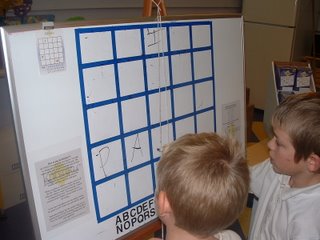I just finished reading Made to Stick by Chip Heath and Dan Heath, which is excellent examination of the concept of "Stickiness", which was originally introduced in the business classic The Tipping Point by Malcom Gladwell. This book has caused me to re-examine the marketing messages used in all of the games that we are currently offering at On The Spot Games.
One particular concept from this book that "stuck" with me was "The Curse of Knowledge". This curse afflicts anyone who has expertise in a particular subject who attempts to share their knowlege with others. The curse occurs when you, as the expert, take for granted the myriad of subtle bits of information that you have acquired over the years that it has taken you to become an expert. As a result, you make what you believe to be a very compelling presentation of your knowledge that do not make sense to your audience, while they make perfect sense to you.
The book offer an excellent illustration of this problem as it describes an experiment that involved two groups of people known as "tappers" and "listeners". The tappers were asked to tap out the rythm of common tunes such as "Happy Birthday to You" to the listeners and the listeners were asked to guess the name of the tune. Beforehand the listeners were asked to predict what their success rate would be. As a group, their predictions averaged about 50%. Reading this you might agree with this prediction, as you hum the tune in your head and tap it out. But in reality, the only thing the listeners could hear was the tapping without the benefit of a background tune. Their success in guessing the tune was only 2.5%. Quite a bit less than the optimistic prediction of the tappers.
I've come to realize that The Curse of Knowledge, has really afflicted the messaging of many of our games. Many of the game descriptions that we've written for these games are literal descriptions of what you do when you play, which takes for granted the experience we are anticipating from playing the game. DidYa Know, for example, is currently described as "Family Storytelling Fun". Hmph. If I've never seen this game before, what does this mean to me? In the future, I'll be revamping this message to evoke the true experience that I'm expecting players to have. Something along the lines of "The Game that Brings Back Sunday Dinner Conversation." Stay tuned...
